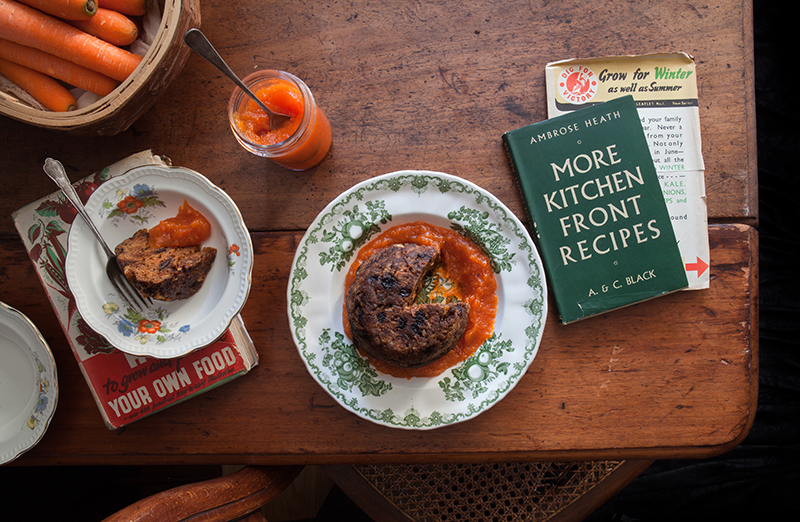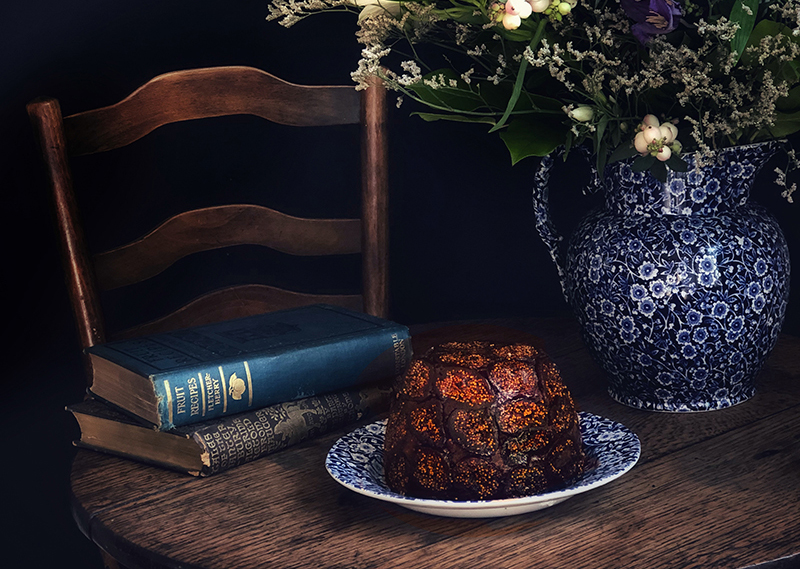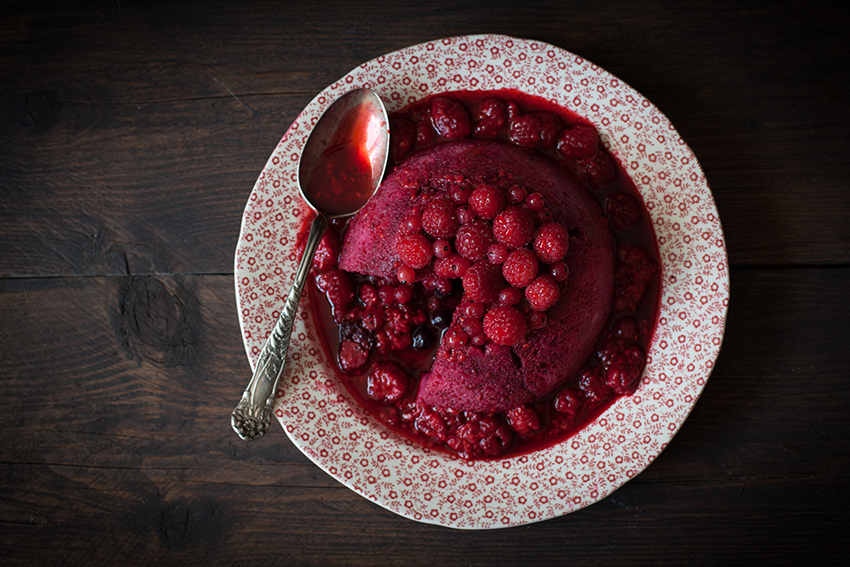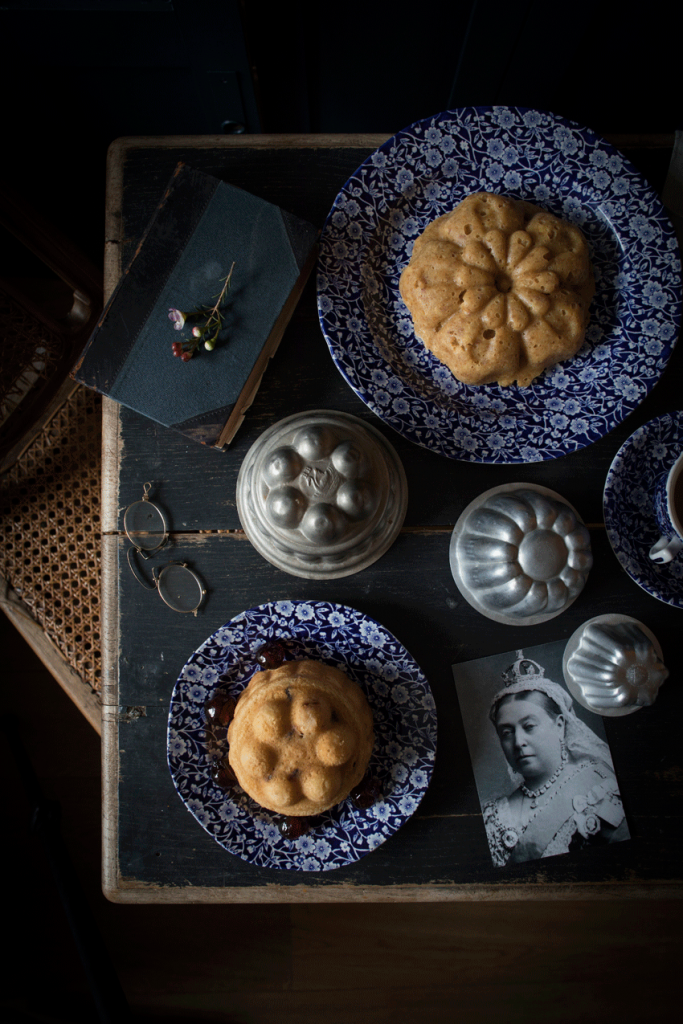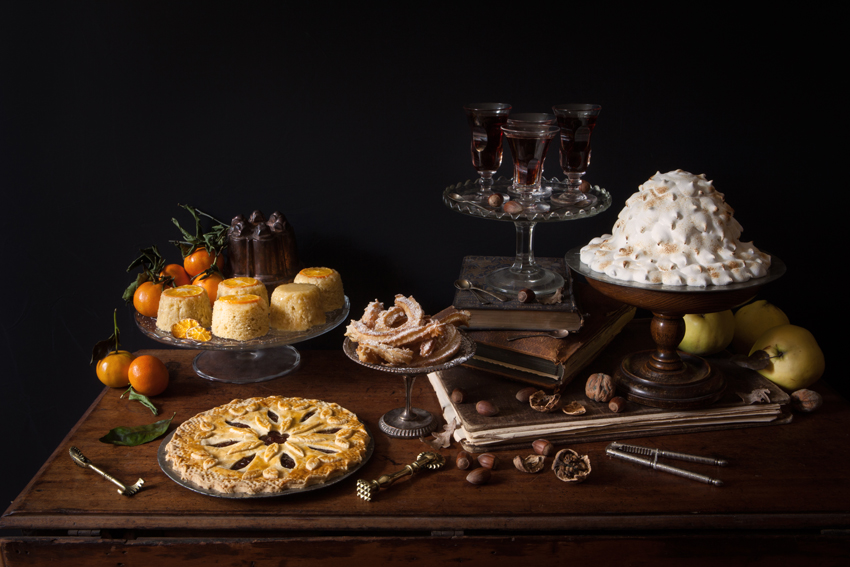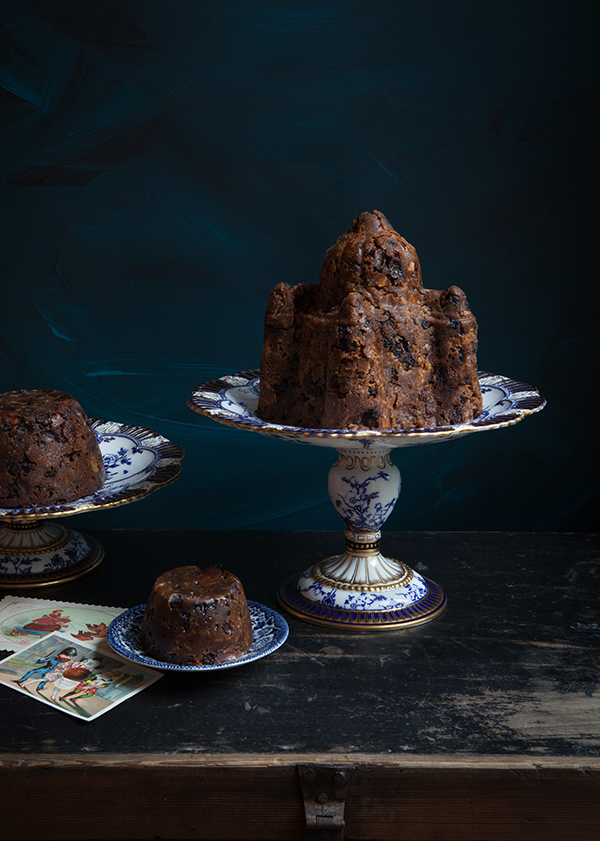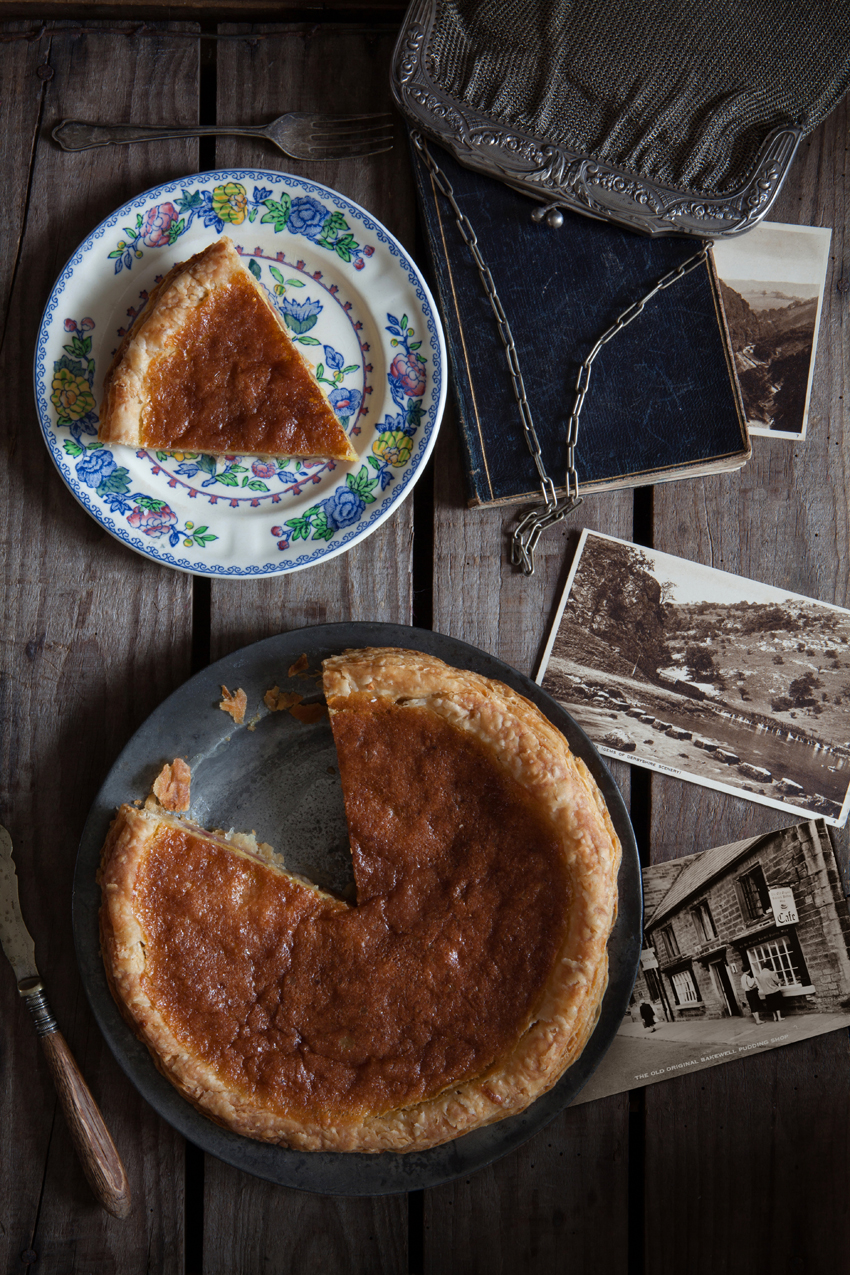Today 8 may I’ll be showing two war-time recipes over at London’s Borough Market for the 75th anniversary of ‘Victory in Europe Day’ or the end of WWII.
While world wars and lockdown are very different, both have led to difficulties obtaining certain ingredients. We’ll be looking at two war-time recipes that were actually promoted by the Ministry of Food because there was an overload of carrots and potatoes. Recipe booklets were made to help cooks to whip up a variety of recipes with carrots and potatoes and other austere but often very delicious creative recipes…
pudding
Jaune Mange
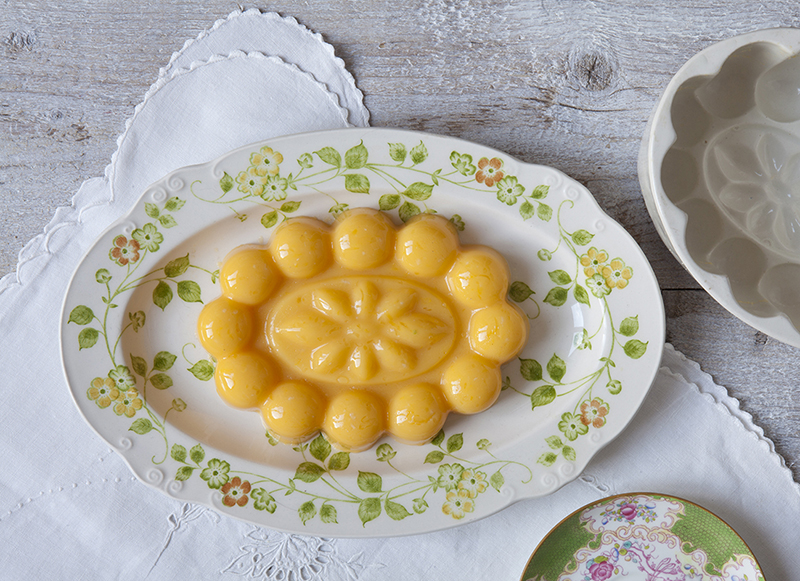 Jaune Mange jelly is the yellow sister to the ancient delicacy called Blanc Mange which means ‘white food’. It is one of the most international early dishes of European cuisine. From the Middle Ages onwards the name of this dish in its various forms – blanc mange, blanc manger, blamange, manjar branco, biancomangiare – can be found in most European cookery books.
Jaune Mange jelly is the yellow sister to the ancient delicacy called Blanc Mange which means ‘white food’. It is one of the most international early dishes of European cuisine. From the Middle Ages onwards the name of this dish in its various forms – blanc mange, blanc manger, blamange, manjar branco, biancomangiare – can be found in most European cookery books.
It is believed by many food historians that the earliest recipe for blancmange dates back to the twelfth century. Two recipes for blancmange also feature in the earliest English cookery text, The Forme of Cury from C1390. By 1395, two recipes for blancmange can be found in the Viandier manuscripts, the first French cookbook: one is a dish for the sick, the other is a multicoloured dish, which is at odds with the name’s literal meaning.
This recipe uses seville orange juice, while others recommend lemon and lemon peel for flavour and colour. Later recipes by J.H. Walsh in The British Cookery Book (1864) instruct the cook to use sherry or ‘raisin-wine’. Because the eggs give this jaune mange a set already, you don’t need to use as much gelatine as you would for a blancmange.`…
Figgy Pudding for my ‘National Trust Book of Puddings’
Today is Stir-up sunday and the most important day on the pudding calendar. Today is the day to prepare the Christmas pudding, or plum pudding. Why this should be done a month before Christmas is something I’ve written about in a previous posting here and in my book Pride and Pudding. But this year I wanted to give you an alternative to the traditional plum pud.
A figgy pudding is just another name for a plum pudding – and both of them generally refer to puddings made with raisins or currants and no figs at all. However there have been recipes for figgy pudding in the late 19th century, but those recipes did refer to puddings made with figs and didn’t give a recipe for plum pudding. Using dried figs, this results in a dark and luxurious winter pudding. Why not have this as your pudding on Christmas day for a change this year?
This is a recipe from my little book the ‘National Trust Book Of Puddings‘ which was published in april (2019)….
Latvian Rye Trifle and a visit to Riga
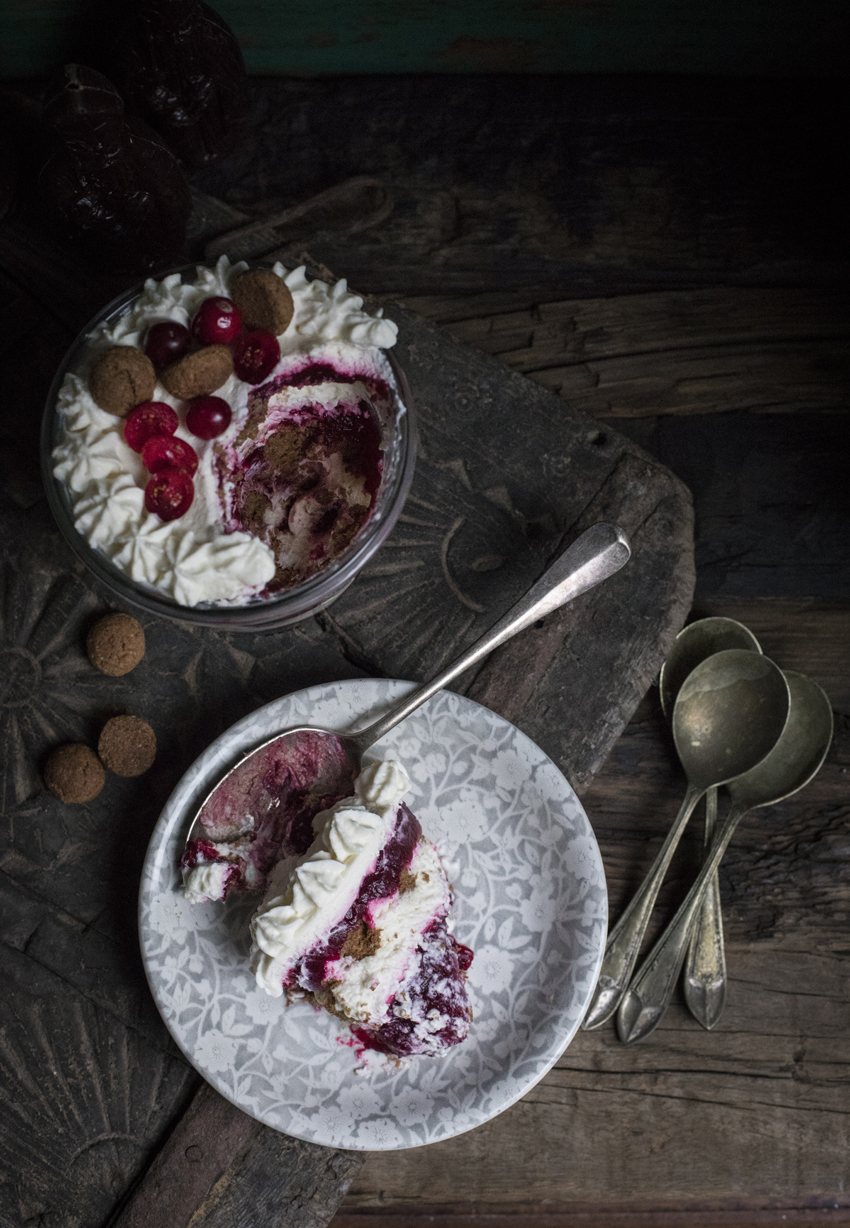 In februari last year I went on a backpacking trip to Latvia, I was doing some research for one of my projects and with it met up with a woman I had met at the Oxford Symposium.
In februari last year I went on a backpacking trip to Latvia, I was doing some research for one of my projects and with it met up with a woman I had met at the Oxford Symposium.
One of the most memorable things I ate while in Latvia was a Rye bread trifle with cranberries on lingonberries they call ‘Rupjmaizes kārtojums’. It is made by grating the iconic sweet Rye bread and lightly frying the crumbs then layering it with cream and curd cheese and the tart red cranberries they use so often in their cuisine. It was offered to me by the host in ‘Zaku Krogs’ a most wonderful Jamaica Inn-like ex-rabbit hunters Inn in Jurkalne which is about an 2,5 hour drive from Riga. The drive there takes you through forests which are laden with berry shrubs and strange small villages with Soviet-style blocks of flats.
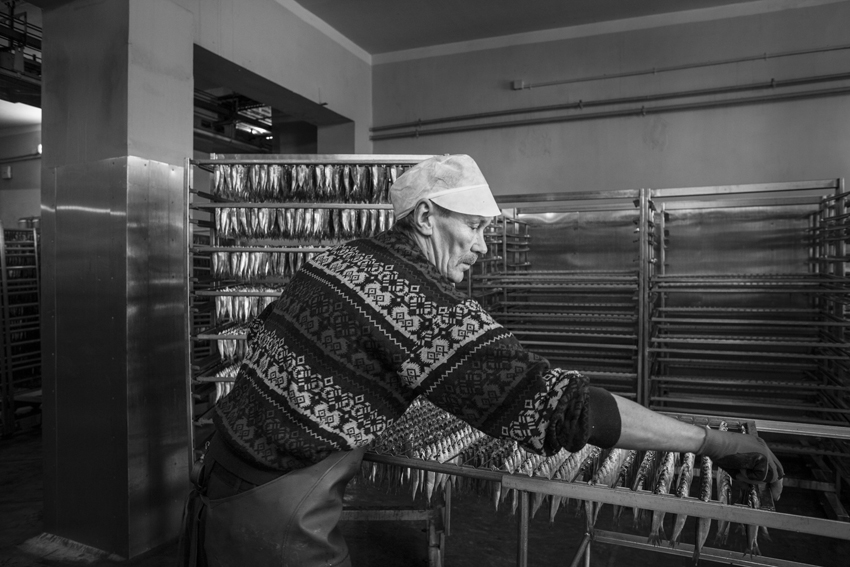 On our way to Jurkalne we visited Ildze’s friend who works in the office of a sprat canning factory where all the people from the surrounding villages work. It was a unique insight to how this works, the sprats are delivered daily and extremely fresh and processed that same day. Processing means they are sorted by size and arranged on hooks by a group of women, then they are smoked – no artificial dye here – and then another group of women sorts the sprats neatly in their tins like braided hair. Then the sprats get a generous blob of salt on them, rapeseed oil and the tins are closed and finally pasteurised….
On our way to Jurkalne we visited Ildze’s friend who works in the office of a sprat canning factory where all the people from the surrounding villages work. It was a unique insight to how this works, the sprats are delivered daily and extremely fresh and processed that same day. Processing means they are sorted by size and arranged on hooks by a group of women, then they are smoked – no artificial dye here – and then another group of women sorts the sprats neatly in their tins like braided hair. Then the sprats get a generous blob of salt on them, rapeseed oil and the tins are closed and finally pasteurised….
Sticky toffee pudding with prunes
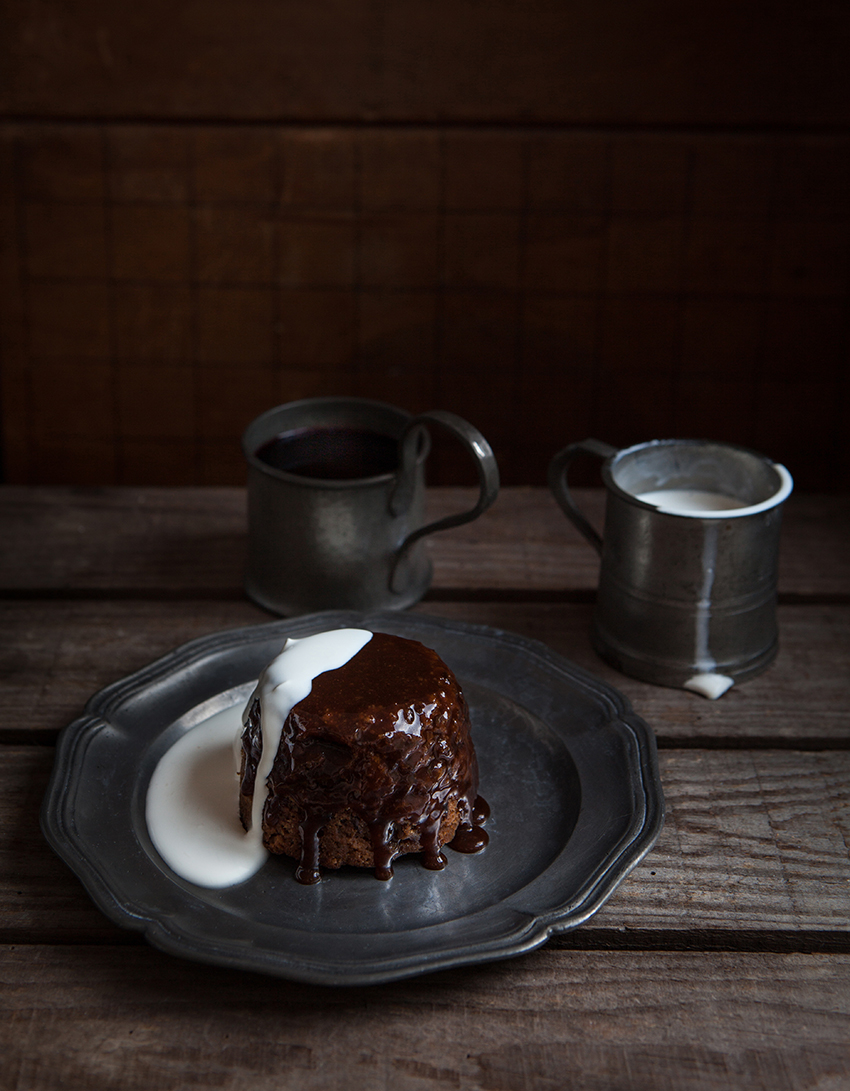 Although I’m now one of the judges on our very own Bake Off in Belgium, I still miss the Great British Bake Off on my television screen every week around this time. As we can only get BBC 1&2, Bake Off has been off-limits to us since its move to Channel 4. GBBO has less viewing figures than when it aired on BBC, that’s partly because they lost viewers from outside of the UK. It seems however that our ‘series one’ of Bake Off Vlaanderen came at the right moment, everyone who misses GBBO in Belgium can soothe their Bake Off hunger by watching us! (if you want to watch it online, you can by going to this page – go to the films with the word ‘Aflevering’ (episode) and there you need to be filling out some details to count viewing figures, the system asks to create a password an to leave your address, just enter 2000 Antwerp)
Although I’m now one of the judges on our very own Bake Off in Belgium, I still miss the Great British Bake Off on my television screen every week around this time. As we can only get BBC 1&2, Bake Off has been off-limits to us since its move to Channel 4. GBBO has less viewing figures than when it aired on BBC, that’s partly because they lost viewers from outside of the UK. It seems however that our ‘series one’ of Bake Off Vlaanderen came at the right moment, everyone who misses GBBO in Belgium can soothe their Bake Off hunger by watching us! (if you want to watch it online, you can by going to this page – go to the films with the word ‘Aflevering’ (episode) and there you need to be filling out some details to count viewing figures, the system asks to create a password an to leave your address, just enter 2000 Antwerp)
Luckily there is social media to keep me informed of the happenings on GBBO and this morning I heard from the lovely Lia of the Lemon & Vanilla blog that tonights episode will feature pudding week! The bakers task is to make a steamed pudding and because I’ve published a whole tome on pudding – savoury and sweet – (in my book Pride and Pudding) I thought I’d share with you one of my favourite sweet steamed puddings: the sticky toffee pudding.
When going for a nice long walk in the British countryside there’s only one thing I long for and that is a pub meal ended with a sticky toffee pud accompanied by a Whisky. It’s the ultimate pudding to have after good outdoor exercise. This is definitely an occasion where I leave room for pudding. A delightfully light yet heavy steamed bit of cake batter, always in a pudding basin, never in the shape of a log please, drowned in custard or with a side of vanilla ice cream which is essentially frozen custard anyway.
Many puddings are surrounded by legends and this is one of them. It is said that the sticky toffee pudding was invented in the 1960s by Francis Coulson of the Sharrow Bay Hotel by the majestic Ullswater lake in the Lake District. He called it an ‘icky sticky toffee sponge’….
Summer Pudding
There’s a lot going on in life but I wanted to share this recipe with you because I find when things get too busy or too complicated, an easy yet satisfying pudding can work like a drink of ice cold water on a scorching hot day. What also prompted me was something my friend Sarah (you might remember her from the pies she made for my launch) showed me online, a link to the making of a summer pudding which created outrage and disgust in the comments section. Foreigners (non-Brits) didn’t understand why you would eat soggy bread with fruit, and the video that came with it made even my stomach turn…
But the fact is that Summer Pudding is one of life’s great things. Bread soaked in fruit juice takes me right back to my childhood. I was a very picky eater but you could always feed me bread topped with mashed up strawberries, the deep red juices seeping into the bread making it hard to get it to your mouth in one piece. It was messy eating but really the only thing I enjoyed to eat.
But what is this heavenly thing you ask if you aren’t British or a pudding nut like I am?
A summer pudding is a delightfully light pudding which is made by lining a pudding basin or charlotte mould with stale white bread slices, then filling it up with lightly stewed summer fruits and topping it off with a juice-soaked bread lid. I always enjoy unmoulding this pudding, to see how the white slices of bread have been tinted by the deep crimson juice. It looks like a fresh red wine stain on a crisp white tablecloth. When ready to indulge, serve with cream, or ice cream, whichever you prefer….
Francatelli’s Queen Victoria and Albert Pudding
Although spring is in the air at times and daffodils are showing their sunny faces hear and there, some days are still reminding us it is still winter. On cold grey days like these the central heating never seems to give enough warmth although the thermometer says otherwise. Baking seems to be the only antidote to dreary weather and puddings might just be the most fitting with their warming and filling character.
Puddings it is and although I have just published a 378 page book on the history of pudding… which was recently shortlisted for a prestigious André Simon Award (still pinching myself, and although I didn’t win, I am still chuffed to bits!), there are still so many pudding recipes left to boil, bake, steam, fry or freeze. Today I’m taking you to the Victorian era, when puddings were at the height of their splendour.
During Queen Victoria’s reign Britain was going through a period of industrial evolution and urbanisation. It was also a period of peace and stability. The 19th century saw the birth of the rail network with the steam locomotive as the greatest invention. This made for an enormous change in farming as food could now be transported to the towns more quickly and efficiently. On the land a lot of jobs had been replaced by new farming machines, techniques changed, unemployment and poverty rose as the population almost doubled. With more people moving to cities in search for work, demand for produce was high.
The contrast between the lives of the working class and the splendour in which the Queen lived was enormous. Victoria became queen in 1837 at the age of 18 but before that she lived in Kensington Palace which was at that time in quite a state of disrepair.
We know her mostly from her iconic photograph, in profile, dressed in black mourning clothes, looking stern and cold. She is the matriarch, the embodiment of a strong and powerful woman. But in reality she mourned the death of Prince Albert for the rest of her life and found it hard without him.
To know the story behind the portrait, the story of the woman, the queen and the widow, we were treated to an historical drama titled simply ‘Victoria’ recently. And this is the reason for this posting today. ‘Victoria’ is airing in America in March and that is why for the launch TV station KCTS9 and author Laurel Nattress asked me to recreate a pudding for Victoria and her husband Albert from a recipe by the queen’s then chef Charles Elmé Francatelli….
Quince tart and our workshop in Dorset
Two weeks ago on a frosty yet sunny winter morning, we welcomed our workshop attendees at All Hallows Cookery School in Dorset. We started with tea and mini mince pies plus pancakes from the AGA for the early birds. It was hard to get started because we were all having so much fun getting to know each other, or catching up. We made the more delicate puddings from my book, a sweetmeat pudding – otherwise known as the Bakewell pudding, Snake fritters and a quince tart with intricate pastry work. Lunch was beef with prunes, lovingly prepared by our host and owner of the school Lisa Osman. I can’t think of a dish more fitting on a day of English cooking. After all, beef and pudding have been the icon of English food for many centuries. There was a time during the Napoleonic war when eating roast beef and plum pudding would have showed your patriotism. Visitors from all over Europe spoke with high regard about the quality of English meat and beef especially.
After our rather festive lunch in Lisa’s beautiful dining room which made me feel as if I was in a Jane Austen novel, she taught us wreath making which sounds far more easy than it actually was. We struggled and have a huge respect for wreath makers now. We all concluded we now understood why a impressive wreath is so pricy. It takes a ton of work, and will leave you with very painful hands. I finished mine at home and now have it on my front door for all to see….
Stir-up Sunday, History and Plum pudding
Let me start with blowing my own trumpet, it’s my blog so I’m allowed! I’m pleased to have tracked down a copy of Delicious Magazine while in Budapest because in it they have elected my book Pride and Pudding as one of the best books of 2016! After the hard work creating this book I am of course flattered and beyond happy to get this kind of news! So thank you again Delicious Magazine UK!!
Now on to the news of the day!
This weekend will mark the last Sunday before advent which is traditionally Stir-up Sunday. According to (rather recent) tradition, plum pudding or Christmas pudding should be made on this day. It is a custom that is believed to date back to the 1549 Book of Common Prayer (though it is actually not); where a reading states ‘stir up, we beseech thee’. The words would be read in church on the last Sunday before Advent and so the good people knew it was time to start on their favourite Christmas treat.
It was a family affair: everyone would gather to stir the pudding mixture from east to west, in honour of the Three Kings who came from the east. Sometimes coins or trinkets would be hidden in the dough; finding them on Christmas Day would bring luck and good fortune.
There are a lot of legends and claims made about the origins of the plum pudding. Some say it was King George I who requested plum pudding as a part of the first Christmas feast of his reign, in 1714. George I was christened ‘the Pudding King’ because of this myth but there are no written records prior to the twentieth century to tell us that this king deserved this title.
…
Bakewell puddings and Bakewell tarts
It was Bakewell tart on Great British Bake Off yesterday last week! And when Mary said this is what a Bakewell tart should look like… I had to disagree. Traditionally early Bakewell tarts did not have a topping of icing. Nor do they have that lonesome cherry which we associate with cheap shop bought mini-bakewell tarts. Mary’s Bakewell tart didn’t have the cherry but did have the icing with a fancy pattern. It looked the part, don’t get me wrong, but if you visit the town of Bakewell you will see that proud Bakewell tart bakers clearly state that they do not add icing to their Bakewell tarts as icing is not part of the original recipe… But what is the original recipe? When does it stop or start being original? It’s a tough question.
And then there’s that other Bakewell bake… The Bakewell pudding!
Imagine a pub in a quintessentially English village: you enter with an appetite and the special on the menu is a pudding named after that village. You just have to try it, don’t you? And so the Bakewell pudding rose to fame. Even though Wonders of the Peak, the first travel guide to the Peak District, was written by Charles Cotton in 1681, tourism reached a high in Victorian times, helped by the development of the railway and an increasing interest in geology. Victorians also came to ‘take the waters’ in the spa towns of Buxton, Matlock Bath and Bakewell….

